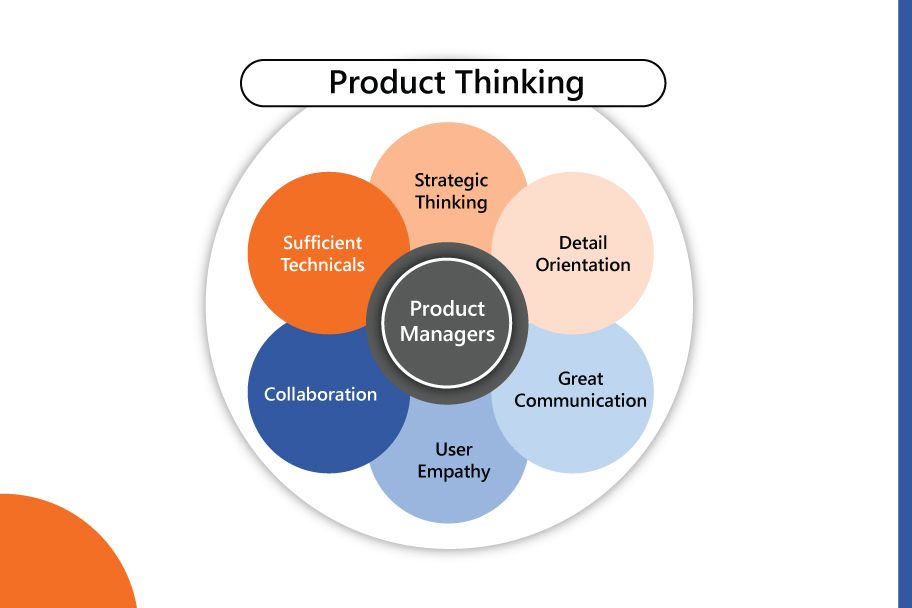What is product thinking?
Product thinking should answer the primary question of “what makes the product useful for the intended audience?” The traditional way of product development was more focused on features and then choosing the audience to sell those features, but now it all comes down to users/customers. With the amount of user behavioral data available through various channels, product managers can gather better insights to design & develop a product that addresses user problems, fulfills customer needs, and deliver a great user experience.
Business Importance of Product Thinking:
Product thinking makes us think in terms of product-first and help us build products that the user needs and not what we can offer. User Adoption, Customer Experience, and Product Design are the three focal points for a product thinking approach.
Product Thinking Approach
Why product thinking is the future?
Design, UX, and Agility have been the key denominators for building a technically sound product but on the flip side product thinking is a habit, an insight, and a mindset that must be nurtured well within the team that is involved in the product building process. While product development was primarily focused on building a technologically sound product, the future will be on creating an integrated approach where product owners and managers will have to match the customer needs with the product.
The key lies in tying the relationship between people and products better than your competitors.
3 ways to evolve product thinking
Outcomes over Output
Output is quantitative and easier to commit, for example developing a user-friendly feature within 30 days and for this, the product owners can pull the right people, set the timeline, and deliver with a project plan. However, Outcomes are not easy to measure like if you are developing a product for an e-commerce client, the goal/outcome can be to attract a niche segment of customers from their competitors.
An outcome is a qualitative approach. Output can be achieved by the executors with a simple project plan, but outcomes can be delivered only if you live through the problem with an ownership mindset and create a roadmap that involves a lot of pre-planning.
Real-world experience vs document understanding
In the product world, product development is heavily backed up by documentation and acceptance criteria. The stakeholders’ requirements and user stories are documented with an acceptance criterion to build a product, by the product managers.
But the right solution is in the synergy of efforts to address the real-world problem and not in the continuous handoffs down the line. The development team should be involved in the initial phase of discussion with the stakeholders and users for better product and user adoption.
Understanding Speed and Timing
This point is strictly coherent with the product life-cycle process. While many organizations use product life cycle tactically to develop a product only a few enterprises involve the marketing function to use product life-cycle strategies to deliver a product that best sells in the market.
The product life cycle should consider the below four stages to not only develop a product that the user wants but also deliver on time before your competitors deliver it, hence speed and timing play a crucial role in the product life cycle management.
- Market Development
- Market Growth
- Market Maturity
- Market Decline
Integrating Design Thinking
By integrating design thinking product managers can observe the user interaction with the product and using that information user experience and adoption can be significantly improved. It mainly focuses on capturing the data and looks at how people engage with the product rather than looking at how the company thinks they engage with the product.
Design thinking outcomes:
- Innovative solutions
- Expands thinking
- Predict problems
- Prioritize needs
- Tackles complex problems
Synopsis & Expertise:
It is evident and apparent that product thinking is not a technical skill but a leadership skill that the product managers, owners, and the development team should generate as a culture and stand out to build unique products that sell in the market, solving the most important underlying problem of meeting the user needs.
iOPEX has been doing this for more than a decade now and has helped organizations to adopt the latest technologies to meet and scale their user and customer needs with speed, agility, and timing. Our digital engineering solutions like Design, Development, and Applications modernization have adopted various tools & technologies with a product thinking mindset and have delivered 500+ applications and products.











